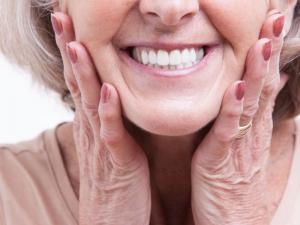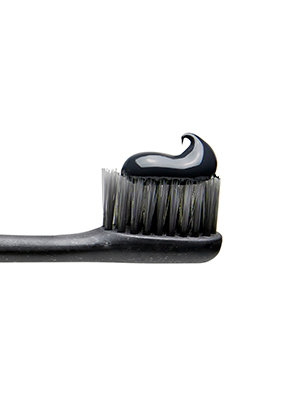Teeth Whitening: The Start of a more confident you!
Everyone deserves to feel confident and look their best. A bright smile is one of the quickest and easiest ways to make a great impression. Not only does it make you look more approachable and friendly, but it also conveys confidence and success. Teeth Whitening with a great dental office is the most effective and shows immediate results for improving your smile! Studies have shown that people with brighter smiles are more likely to be competent and reliable. They are also more likely to succeed in their personal and professional lives. So if you’re looking for a way to boost your confidence and image, start by flashing a bright smile. It could be the best decision you ever make.
According to a survey conducted by Kelton Global for the AACD, 48% of American adults believe a smile is the most memorable feature after meeting them for the first time (AACD).
Teeth Discoloration: The need for teeth whitening
The tooth colors are directly correlated with age. Over time, stains form, and dark teeth become darker due to wear and tear. Young children will immediately experience the dramatic effects of whitening. Depending on the age and yellowing of the to, the process will need more time to complete before it’s fully healed. In the 50s, yellow was replaced by brown, and maintenance as possible. By the early 50s, teeth absorb numerous stains and can be hard to remove. We all have an inborn tooth color that ranges from yellow-brown to gray and intensifies as it passes.
Shade guides for teeth whitening
The teeth’ color measured before and after is usually measured using shades and guides. They are handheld dispenses that display many tooth colors. ( Dentists also use this information to choose the color for the crowns ). It is also the standard guide for classic shades. This shade guide standard contains 16 shades, grouped systematically between light to dark in four colors, and gives the universal tooth-color terminology. Although whitening can often brighten teeth with nine or more shades, many who bleach teeth will see an improvement of 2 to 7 shades.
What percent of people use teeth whitening?
According to Statistica, 37.0 million Americans will use tooth whiteners in 2020. This figure is projected to decrease to 35.22 million in 2024
What are your whitening options?
There are three primary teeth whitening products available today. They all use different concentrations of peroxide and have other application times. Here is a brief overview of each:
1. In-office dental office teeth whitening
This is one of the most effective methods and involves carefully applying a highly concentrated gel peroxide to the teeth by a dental technician or trained professional. The peroxide stays on the teeth for 15 minutes before being rinsed off. This is the best result and gives an immediate return on your investment. It may cost a bit more, but you see it immediately, and it works! Request an appointment with the best dental office in Richardson!
2. At-home kits
These are available online and typically range in price from $50 to $200. They usually involve using a tray or strip soaked in peroxide placed on the teeth for a specified time. There are hundreds to choose from, and you do this every few months. You may try a few out and compare how you feel, and your teeth look.
3. Toothpaste
Some toothpaste contains charcoal or baking soda, which can help to whiten the teeth. In addition, some toothpaste has peroxide as an active ingredient. There are many options for this as this is a daily practice that may enhance your teeth whitening quest.
Tooth Discoloration: Extrinsic vs. Intrinsic Staining
The teeth have two types: intrinsic stain and intrinsic. Extrinsic stains occur in the teeth when exposed to the darkest foods or drinks, routine cleaning, and frequent wear and tear. Superficial extrinsic staining is minimal and can be eliminated by brushing or preventative dentistry. Stubborn extrinsic stainings are easily removed using more intensive techniques. Occasionally extrinsic stains will penetrate the dentin and ingest a dentin layer if left unaffected. As a result, stains inside teeth develop.
How long can teeth whitening last?
The effects of teeth whitening can last up to 2-3 years or as little as 6 months. After that, it varies from person to person. Things that will stain your teeth quickly and make your whitening short-lived include – Smoking, drinking coffee daily, and drinking wine and soda. If you want to maintain your white smile, we recommend getting a whitening booster every 6 months. You can also try using at-home whitening treatments like whitening toothpaste, mouthwash, and strips regularly.

Teeth Whitening Richardson Dental
Teeth Whitening Statistics
According to the American Academy of Cosmetic Dentistry, 96% of Americans believe that a white smile is an important social asset. The statistics on the whitening of teeth are as follows:
– 47% of people use over-the-counter whiteners
– 71% of people who use whiteners use home-use whitening products
– 62% of people who use whiteners use in-office teeth whitening treatments
Professional Teeth Cleaning
Suppose you are looking for a whiter smile. In that case, you may consider getting your teeth cleaned professionally by a great dentist. Professional teeth cleaning can remove stains and plaque built up over time. This type of cleaning is usually done by a dental hygienist. The cost of professional teeth cleaning varies, but it is typically less expensive than other whitening options. Request an appointment with the best dental office in Richardson!
The best way to achieve long-lasting results is to get your teeth professionally cleaned and then maintain your oral hygiene at home. The following are some tips for maintaining whiter teeth:
- Brush your teeth at least twice a day.
- Floss at least once a day.
- Use mouthwash to help prevent plaque buildup.
- Avoid smoking and drinking coffee, tea, or red wine.
- Visit your dentist regularly for professional cleanings and checkups.
Preparing for Your Treatment
Teeth whitening can be reasonably straightforward, but you must start with the basics before whitening your teeth. Make a regular appointment to get teeth whitening every six months. Dental work is necessary for your teeth and gums to function correctly. Visiting a dentist every three months for a dental checkup is essential for a successful oral wellness check. However, you must maintain a healthy oral hygiene routine and brush your teeth as soon as possible during your appointment.
An Examination of Tooth Enamels
Most Americans have sparkling teeth that are covered in porcelain enamel. Dental enamel is a microscopic crystal-shaped rod that helps protect teeth from a sugar attack. But as time passes, the enamel will become thinner and transparent, allowing more dentin yellow to shine through. In addition, dentin retains elasticity during normal chewing. As a result, millions of tiny dents are present. These swollen cracks and gaps are a part of the pores of crystalline enamel, which gradually accumulate stains and dust. If not cleaned, these stains will set.
The Different Types of Dental Enamel
There are three types of dental enamel: inner, outer, and cementum. The enamel that covers the crowns of teeth is known as outer enamel. It is the hardest and most resistant to wear. Inner enamel is found on the root surfaces of teeth and is softer than outer enamel. Cementum is a hard, bony material that covers the root surfaces of teeth.
How Does Enamel Work?
The enamel protects the tooth from external influences by providing a barrier. The mineral hydroxyapatite is found in bones and teeth. Sodium, calcium, and phosphorus make up hydroxyapatite. These atoms form a lattice-like structure when they are put under high pressure. This structure gives enamel its strength.
How Does Enamel Become Worn?
Enamel can become worn down by acidic foods, drinks, and toothpaste. It can also be worn down by brushing too hard. Enamel can also be damaged by grinding or clenching teeth. When enamel is worn down, it becomes thinner and more translucent. This makes the yellow dentin underneath the enamel more visible.
Enamel Loss: Causes and Prevention
There are many reasons why enamel loss occurs. It can be caused by acidic foods and drinks, tooth grinding, and clenching. It can also be caused by dental diseases such as dental caries.
To prevent enamel loss, it is essential to brush your teeth gently with a soft-bristled toothbrush. You should also avoid acidic foods and drinks. If you grind or clench your teeth, you should see a dentist to get fitted for a mouthguard.
What Is Dentin?
Dentin is a hard, bone-like tissue that makes up the bulk of the tooth. The crown of the tooth is covered by enamel, while the root is covered by cementum. Dentin is yellow in color and becomes more visible as the enamel becomes thinner. Dentin comprises microscopic tubes that run from the pulp chamber to the dentin surface. These tubes are filled with nerve endings that allow for sensation. Dentin is also made up of minerals, such as calcium and phosphate. Dentin is softer than enamel and is more susceptible to wear. It can also be damaged by acid or by brushing too hard. When dentin is exposed, it can cause tooth sensitivity.
Using a soft-bristled toothbrush and avoiding acidic foods and beverages can prevent tooth sensitivity. If you have tooth sensitivity, you can use desensitizing toothpaste.
What is laser teeth whitening?
It took decades to whiten the teeth by using distilled water to lift stains that needed many treatments to get results. Thanks to technology, the procedure is faster – using Lasers sparked by chemical reactions in the solution also allows teeth to be whitened considerably quicker. Zoom teeth whitening is the most commonly performed procedure for whitening teeth using a laser. This service is only available on-site. Ingredients of Zoom: -Water-based hydrogen peroxide -Laser (light)
– More than 14 million teeth whitening procedures were performed in the United States in 2016.
– The average cost of a laser teeth whitening procedure is $1500. It is one of the most expensive
– Laser teeth whitening is becoming an increasingly popular cosmetic treatment.
How safe is teeth whitening?
Most people don’t have any issues with teeth whitening. Some discomfort and sensitivity can occur during and after the procedure, but it usually passes quickly. In rare cases, people may have an allergic reaction to the bleaching gel. Talk to your dentist before getting the procedure done if you have any concerns.
How much does teeth whitening cost?
The cost of teeth whitening can vary depending on your chosen procedure and where you get it done. In-office systems are more expensive than at-home kits, but they usually get better results. The average cost of an in-office teeth whitening procedure is $300-570. At-home teeth whitening kits can range from $30 to $300. Laser teeth whitening costs the most, anywhere between $1000 to $3000 depending on your location.
Brighten your smile with several shades in a single visit
Your smile helps you express yourself well and makes a great first impression on new people. In addition, having a great smile will help you feel more confident, and your smile may be more open in private if you like it. A dental bleaching treatment is a simple way to improve confidence in a person’s smile. Even when applied with an in-office whitening solution, it will brighten your smile in several shades in one treatment. Some whitening procedures yield dramatic results after a single treatment, while others will whiten gradually over a few weeks. There are also some treatments where you aren’t likely to see very noticeable results.
What’s the difference between bleaching and whitening?
A new report from the FDA shows that teeth are not white when they have a color. The rules apply to only products containing bleach. On the contrary, “whitening” refers to restoring tooth color by removing dust. Any product used in tooth whitening can be considered white. Of course, whitening is better than whitening, so this is often used when describing a product that contains bleach.
Some natural alternatives
Baking soda: Baking soda might whiten your teeth, but its abrasiveness will likely harm enamel. There are many different baking soda toothpaste recipes available online. Do your research and try to see if you can get good results!
Coconut oil: There are claims that coconut oil can help whiten teeth and improve oral health. However, there is no scientific evidence to support these claims.

Charcoal Toothpaste
Charcoal is one of the world’s most popular wellness and cosmetic trends. It has become a popular component in commercial face masks and scrubs, as well as some individuals who swear by it for whitening their teeth. The claims are many such as a natural teeth whitening agent removes extrinsic stains and is a natural way to remove plaque while preventing tooth decay. Read our extended blog on Charcoal Toothpaste here.
Fruits and vegetables
Eating certain fruits and vegetables, such as strawberries and pineapple, may help remove surface stains from your teeth.
Water
Drinking plenty of water can help rinse away food and drinks that can cause staining. It’s natural and perfect for your overall health!
Whitening teeth is a popular cosmetic treatment that can improve your smile and confidence. In most cases, it’s safe and relatively affordable. However, it’s essential to understand the potential risks and side effects before you commit to treatment. The most common type of teeth whitening is bleaching, which uses chemical agents to remove stains and discoloration. While bleaching is generally safe, it can cause temporary side effects, such as tooth sensitivity and gum irritation. In rare cases, it may also damage the enamel on your teeth.
If you’re considering teeth whitening, talk to your dentist about the risks and benefits. They can help you decide if bleaching is suitable for you and recommend the best course of treatment.
Let us know your thoughts on teeth whitening and which method you will use to boost your confidence and have a sparkling smile!
This article is for educational and informative purposes and is not meant to be health or medical advice. A physician or other qualified health provider should always address questions about your medical condition or healthcare goals.


